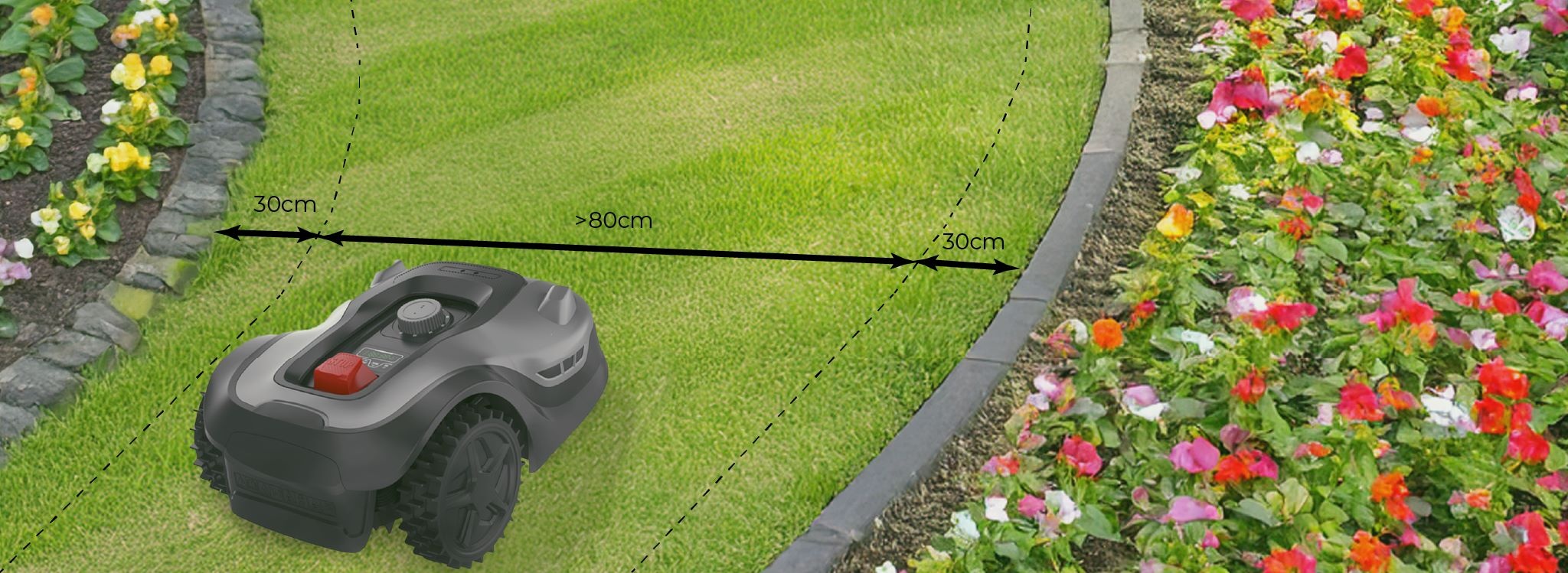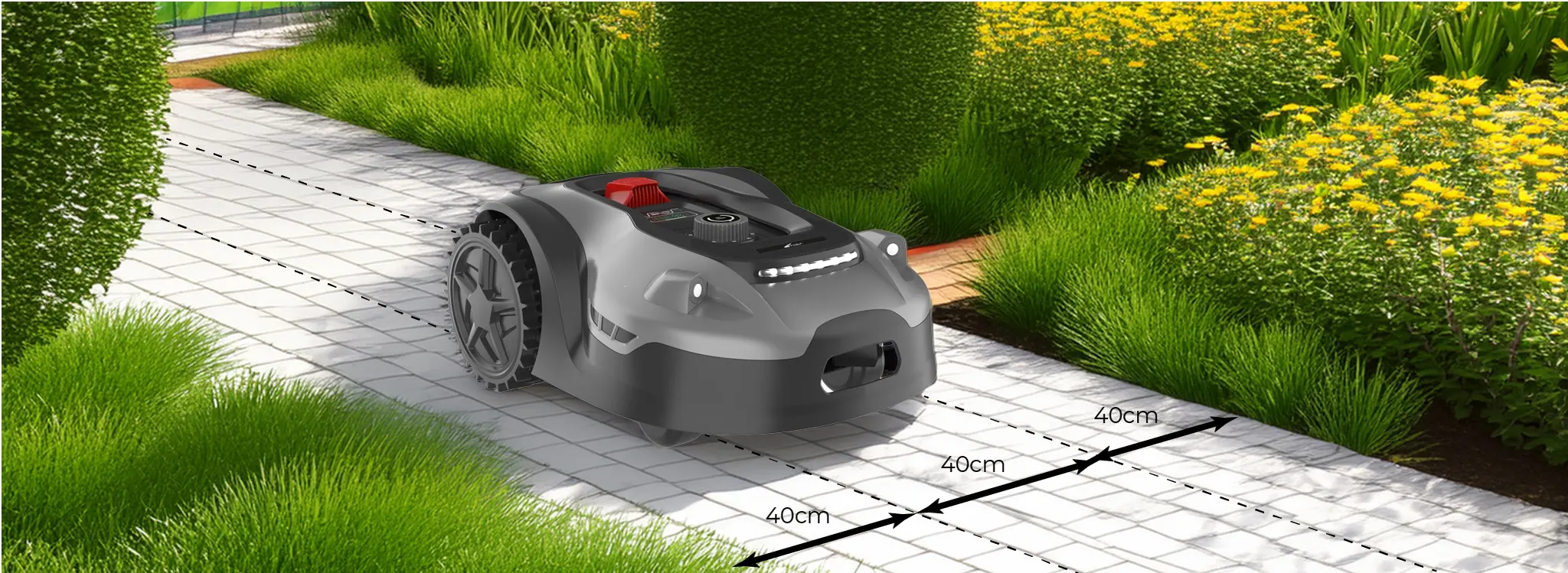Robot mower installation
Installing a Robotic Lawnmower
A robotic lawnmower is, of course, a wonderful help in the garden. It must, however, be installed correctly for the robotic lawnmower to function properly. We have outlined the steps for a proper installation below.
Step 1: Keep this in mind!
- Ensure the robot does not operate on a larger lawn than it is suitable for.
- The robotic lawnmower drives over the boundary wire to return to the charging station.
- The boundary wire must always be laid as one large loop, and the robot will continue to operate between the boundary wires.
- Ensure there are no metal objects or other items on the lawn.
- Before using the app (if you have a robotic lawnmower with an app), ensure there is good reception everywhere in the garden.
- Also, ensure there is a power connection within a maximum of 5 meters of the lawn.
Don't have a robotic lawnmower yet, but want one? Then check out 'how do I choose my robotic lawnmower!'
Step 2: Preparation
- Ensure you have a sketch or a good idea of your garden and consider where you can best connect power.
- Look for where the charging station can be placed. It must be close to the power outlet.
- Ensure your robotic lawnmower can handle the surface area of your lawn.
- Remove loose objects from your lawn. Think of branches or other loose items.
- Mow the lawn once very low, so the robot can easily continue its work and keep the grass at a good length.
Step 3: Place the charging station
- It is important to place it close to a power outlet.
- Place the charging station at the edge of the lawn on a flat surface.
- Try to place it in a cooler spot. For example, a shady spot, so it doesn't stay in the sun for too long and the battery doesn't get hot as quickly.
- Ensure there is sufficient space around the charging station so that it can drive in and out easily. Refer to the manual for more specific information on this.
- It is very important that the charging station is placed so that the robot drives out to the right. As seen when you are standing on the lawn yourself. This applies to Hans, Teun, and Katrien; for other models, you can find this in the manual.
- After laying the boundary wire (Step 4), the boundary wire that goes under the charging station must be connected to the red connector.
The other end of the boundary wire connects to the black connector. More information can be found in the manual. For more information on this, see the article in our help center about the placement of the charging station.
Step 4: Laying the boundary wire

- Start at the charging station and lay the boundary wire as a large loop around the edge of your property. Refer to the manual and use the included ruler to determine the distance to the edge of your lawn.
- When laying the boundary wire, you must maintain 30cm between the boundary wire and the edge.
- If there is a path next to the lawn that is the same height as the lawn, you can lay the boundary wire 5 to 8cm from the edge, as the mower can then drive halfway over it and thus better mow the edges.
- Obstacles that the robot cannot/should not drive against must be marked off. Marking can be done with border edges, stakes around a small tree, or with a loop of the boundary wire. Trees or other sturdy objects do not need to be marked off; the robot can collide with them and turn around.
- Secure the boundary wire with ground pegs. The boundary wire will become invisible within a short time due to mulching and will sink slightly into the grass.
- We recommend first securing the boundary wire with a few pegs. This allows it to be easily adjusted after an initial test run. Make sure the mowing blade is fully raised or the blades are removed. Otherwise, the boundary wire could be cut.
- We recommend not burying the boundary wire if possible. If you bury the boundary wire, it may sink further over time, and eventually, the mower may not receive the signal properly. If you do want to bury it because it is much more convenient, we recommend doing so to a maximum of 5cm.

Mowing multiple zones? No problem!
- Our robotic lawnmowers can drive and mow through narrow passages of 0.8m (see image in Step 4). Please note that in addition to the 0.8m, there must also be 30cm of space on both sides between the wire and the edge.
- Do you have two sections of grass (for example, in front of and behind the house) connected by a path? If the path is the same height as the grass, the robotic lawnmower can drive over it to go to another section of grass, for example. In this case, you can lay the boundary wire closer together: 40cmx40cmx40cm. This is because the robotic lawnmower does not need to mow on this path and therefore only needs to drive over the boundary wire to go to the other section of lawn. The boundary wire must always be a large loop (and therefore cannot have a split).

Step 5: Connect the charging station to power
Bring the power cable indoors to the charging station. Turn on the robotic lawnmower and slide the mower into the charging station to charge it. Ensure that the robotic lawnmower makes good contact and the charging station is correctly connected to charge the robotic lawnmower.
Step 6: Robotic lawnmower screen settings
After you have installed everything, you can further configure the robotic lawnmower. You can adjust the language and set a PIN code, because you need this PIN code to use your robotic lawnmower. Check if the robotic lawnmower is running correctly and, to be safe, walk along to see if the boundary wire has been laid correctly. That is, at the correct distance from the edges and flat on the ground, not on the grass.
Also, set the mowing height to what you desire. We can advise you to start with a higher setting and then gradually lower it.
If you would like advice on robotic lawnmowers first, please see Robotic Lawnmower Advice